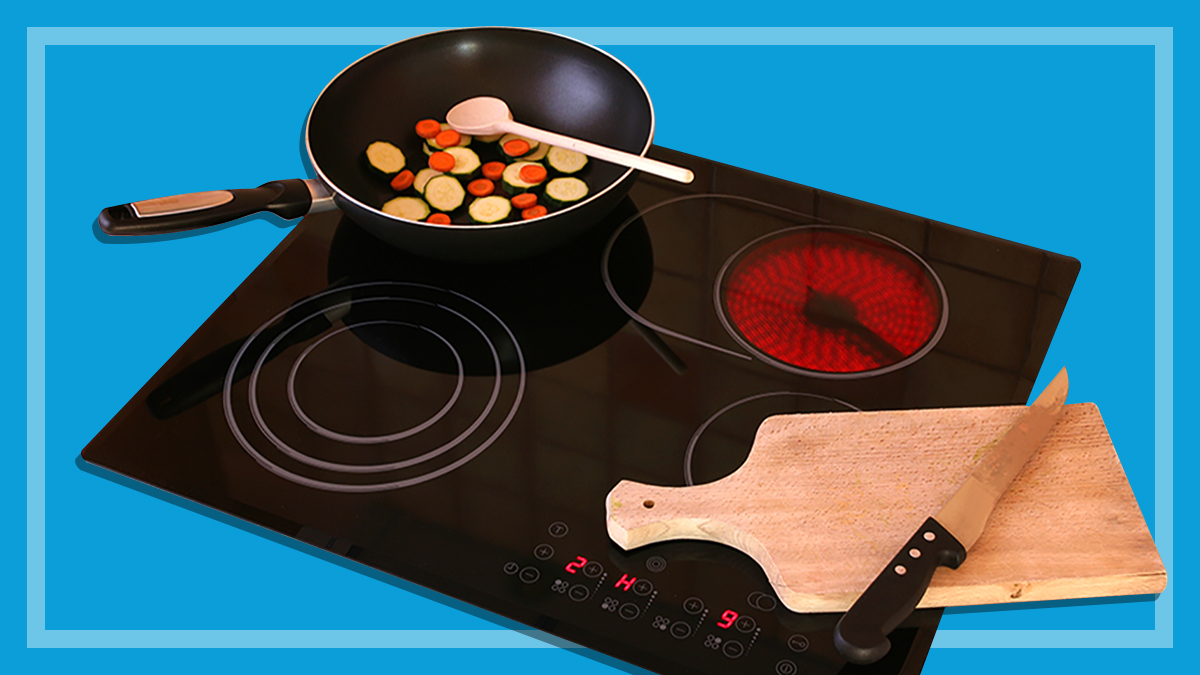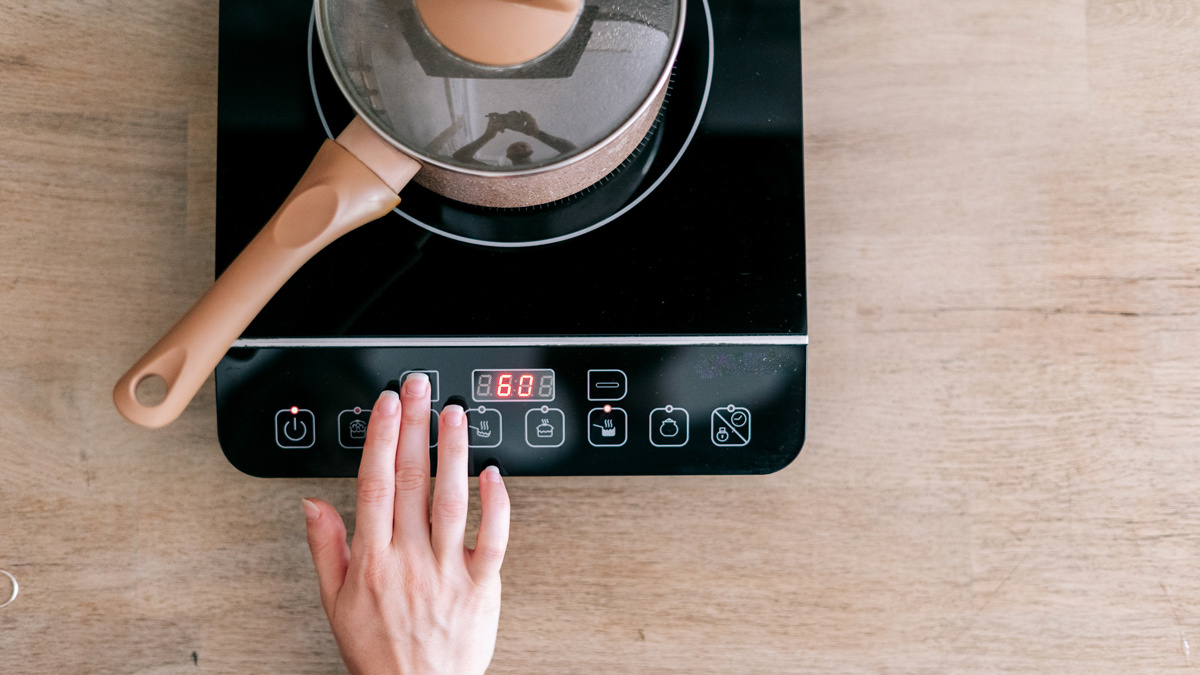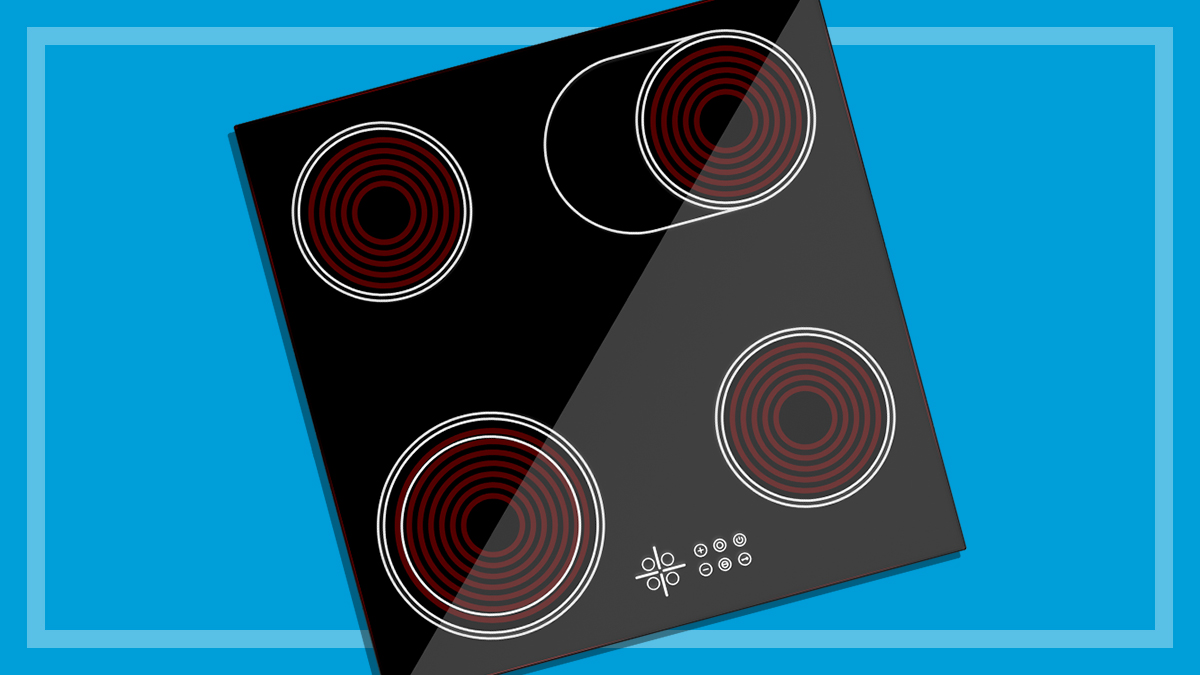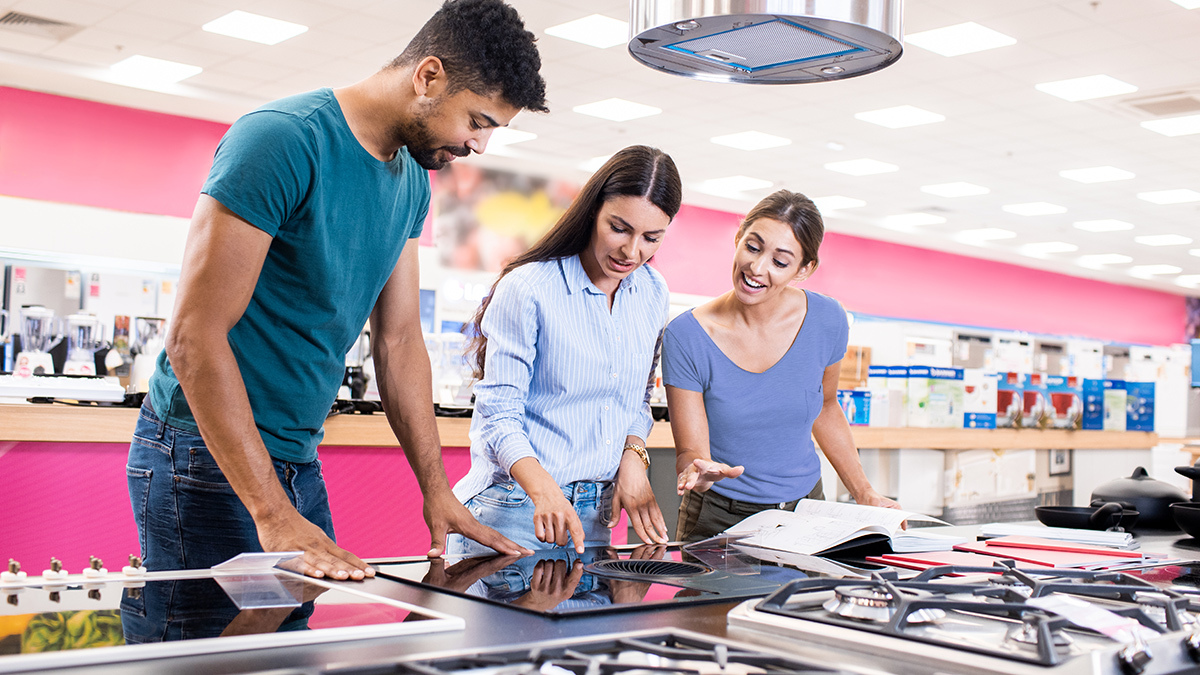Get our independent lab tests, expert reviews and honest advice.
Are gas appliances for cooking and heating bad for your health?
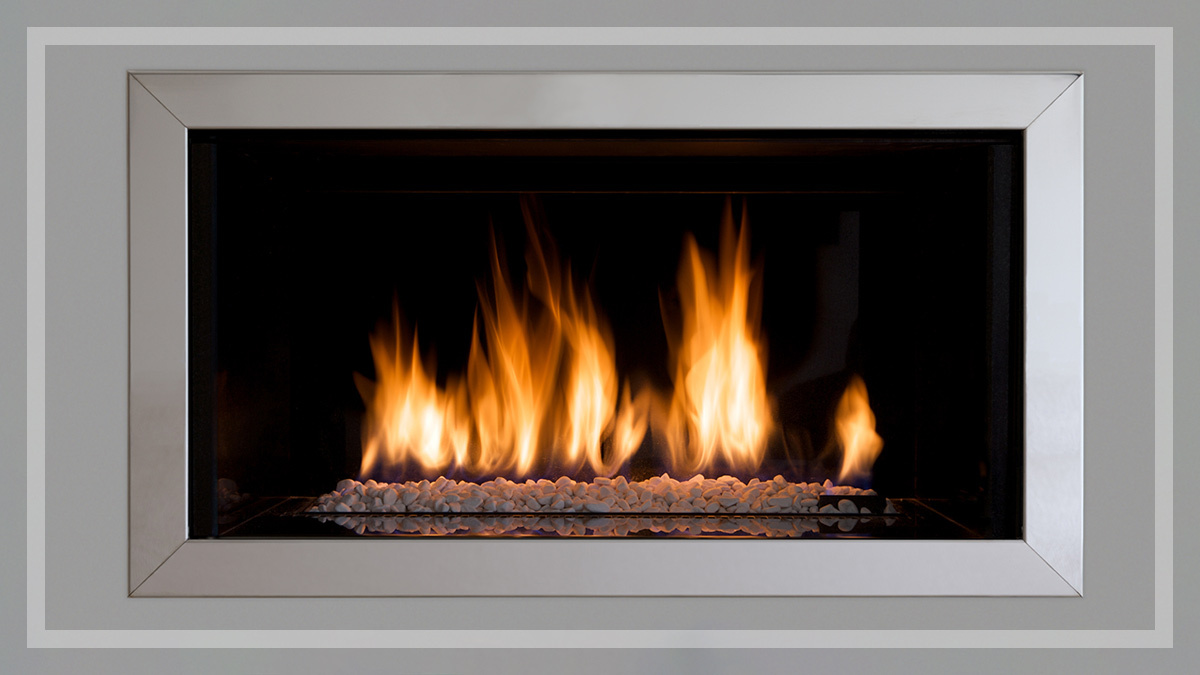
Ask any professional chef what kind of cooktop they use and they’ll almost certainly tell you they cook with gas. Gas cooktops are also favoured by many home cooks for their fast heat-up times, ease of temperature control and versatility with different types of cookware.
In fact, just under half of all energy for cooking in Australian homes comes from gas, with 38.2% of Australian households using piped natural gas for stovetop cooking.
Gas ducted central heating and gas room heaters are also popular in Australia, and gas can be cheaper than electricity for people who have a natural gas connection and no solar panels.
But a new report is shedding light on the dangers of using gas in the home for cooking and heating. We take a look at its findings, and what your options are for improving safety in the home.
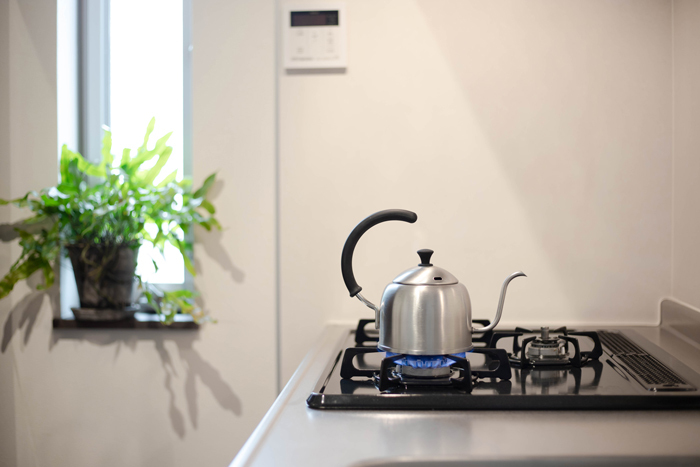
What’s wrong with gas?
Gas is considered to be an environmentally cleaner alternative to wood or coal, but it’s still a polluting fossil fuel that creates greenhouse gases.
The extraction and processing of gas through unconventional methods (such as coal seam gas, shale gas and tight gas) is also associated with increased environmental concerns such as water contamination and air pollution. Australia has historically relied on conventional methods of gas extraction, but the majority of proposed new developments are for unconventional gas projects.
And although the environmental impact of extracting and using gas is widely known, many people aren’t aware that using gas in the home for cooking or heating may also be directly harmful to human health – particularly the health of children.
How gas can affect your health
On average, Australians spend over 90% of their time indoors, so it’s no surprise that poor indoor air quality can have significant negative effects on our health.
Some of the main sources of indoor air pollution include household cleaning and personal care products, cigarette smoke, mould and fuel-burning combustion appliances like gas stovetops and heaters.
When gas is burned, it releases a number of substances that can be harmful to human health including carbon monoxide, nitrogen dioxide and formaldehyde, as well as extremely small particles that can pass through the nose and throat and enter the lungs known as fine particulate matter and ultra-fine particles.
A recently released report from the Climate Council, Kicking the Gas Habit: How Gas is Harming Our Health, outlines a number of serious health impacts linked to using gas-burning appliances in the home.
“Just as doctors spoke up on the dangers of asbestos and tobacco in the past, we have a responsibility now to sound the alarm on the dangers of gas,” says Climate Council spokesperson and report author, Dr Kate Charlesworth.
Asthma and respiratory issues
According to the report from the Climate Council, gas cooktops produce contaminants that are known to increase the risk of childhood asthma, including nitrogen dioxide and fine particles.
Michele Goldman, CEO of Asthma Australia, says that the findings from the report will likely be surprising to many people, but they should be taken seriously.
“Australia already has one of the highest rates of asthma in the world, with one in nine Australians affected,” she says.
“Asthma is also the leading cause of disease burden amongst school age children and a key reason why children present to emergency departments or miss days of schooling.”
The report states that using a gas stove indoors without proper ventilation has a comparable impact on childhood asthma to the impact of having a parent who smokes. A 2018 study estimated that exposure to gas stove emissions is responsible for 12.3% of childhood asthma in Australia.
Using a gas stove indoors without proper ventilation has a comparable impact on childhood asthma to the impact of having a parent who smokes
A 2013 meta-analysis which reviewed results for 41 studies concluded that children living in a home with gas cooking have a 42% increased risk of having current asthma, and a 24% increased risk of being diagnosed with asthma at some point in their life.
There’s also some evidence linking gas cooking to other respiratory issues in children including reduced lung function and rhinitis.
Gas heaters, particularly those that have no extraction flue from the heater to outside, are also known to produce high levels of indoor nitrogen dioxide, which may contribute to respiratory problems and asthma.
Of even more concern, a 2018 study of New Zealand homes found that children living in homes heated by gas – regardless of whether the heater was flued or unflued – were more likely to suffer from acute respiratory infections than children living in homes heated with electricity.

Neuropsychological development
A 2009 study of Spanish preschoolers found that exposure to air pollution from indoor gas appliances within the first three months of life was associated with lower scores for general cognitive, memory, verbal and executive function scores at four years old, as well as an increased risk of ADHD symptoms.
In general, there’s also increasing concern on the adverse neurodevelopmental effects on children of exposure to air pollutants such as nitrogen dioxide which is produced by gas appliances.
Carbon monoxide poisoning
Carbon monoxide is usually produced in small quantities by gas-burning appliances.
Carbon monoxide poisoning occurs when high concentrations of carbon monoxide build up in the air, usually due to a fault in the appliance. This can lead to headaches, nausea, confusion, tiredness, shortness of breath, chest pain, loss of consciousness and, in rare cases, death.
Carbon monoxide is particularly dangerous because it is colourless, odourless and tasteless, meaning you cannot detect when you are being exposed to high levels until symptoms arise.
In 2010, two children were killed in Shepparton, VIctoria, by carbon monoxide from a faulty gas heater while sleeping. An adult woman died in similar circumstances in 2017, also in Victoria.
Are other fuel types better?
Cooking (or heating) with gas carries risks, but switching fuel sources won’t eliminate all pollutants. This is because cooking itself can be a major source of potentially damaging emissions, as heating food with any heat source produces fine particles that can exacerbate respiratory issues.
There are also some other fuel sources that are significantly worse for your health. Solid fuels, such as coal and wood, produce the highest level of air pollutants, with very high levels of particulate matter and carbon monoxide as well as a range of other toxic chemicals.
Gas produces fewer air pollutants than solid fuel, especially less fine particulate matter, making it a healthier choice than solid fuel types.
However, electric cooktops and ovens have been shown to produce significantly lower levels of air pollutants than their gas counterparts. In fact, one study found that swapping a gas stove for an electric stove was associated with a 51% decrease in the levels of nitrogen dioxide in the kitchen after three months.
While there has been limited research comparing induction to electric cooktops, induction is likely to produce even fewer pollutants than electric.
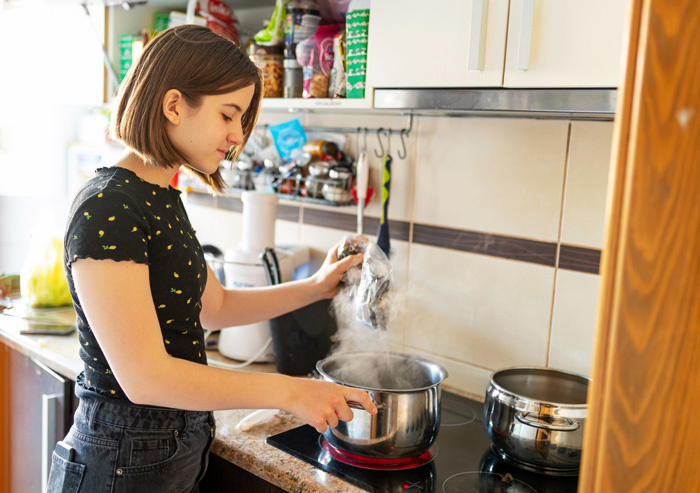
What are your options if you’re switching from gas?
Cooking
CHOICE home economist Fiona Mair says that while many home chefs love cooking with gas, induction cooktops actually heat up pans faster and give you better temperature control.
“An induction cooktop may take some getting used to, but once you do, you’ll find they’re great to cook with,” she says.
“They’re also much easier to clean and generally safer, with safety features like automatic shut off if a pan is dry boiling or if cookware is removed from the cooking surface.”
Mair says newer electric stovetops are also getting better in terms of temperature accuracy and responsiveness.
For diehard gas fans, she suggests using a barbecue with a side burner or a portable gas cooktop outdoors.
“If you really want the gas flame cooking experience for a particular dish, cook it on a burner outside where you don’t need to worry about polluting your indoor air.”
Heating
If you have reverse-cycle air conditioning installed in your home, you should definitely consider using it to heat your home in winter instead of rolling out a gas heater.
Not only will your air quality improve, you might also end up saving money, as it’s significantly cheaper to effectively warm a room with air con than a plug-in heater.
Otherwise, you can always swap your plug-in gas heater for an electric alternative, but they generally cost slightly more to run.
How to improve gas safety in your home?
While the safest option is to simply switch from gas to electric alternatives, this isn’t always possible or practical. And although gas appliances certainly carry their risks, it’s not all bad news.
According to CHOICE expert Chris Barnes there are a number of measures you can take to reduce the risk of using gas appliances.
Heating
There are two main types of gas heaters: flued and unflued.
Flued heaters
These are heaters that are vented outdoors such as gas fireplaces or gas ducted central heating. These are considered safer than unflued heaters because the majority of emissions are directed safely outside.
Unflued heaters
Unflued heaters like plug-in gas heaters which don’t ventilate directly outdoors carry more risks than flued heaters. Even though they’re designed to emit very low levels of pollutants, any pollutants they produce go into your indoor air.
You should never use an unflued heater in a bedroom, bathroom or other small or badly ventilated room, and you should always have a source of fresh air in the room when using one.
It’s also important to never use an unflued gas heater in a room that’s too small for their rated capacity, or emissions can reach unsafe levels.
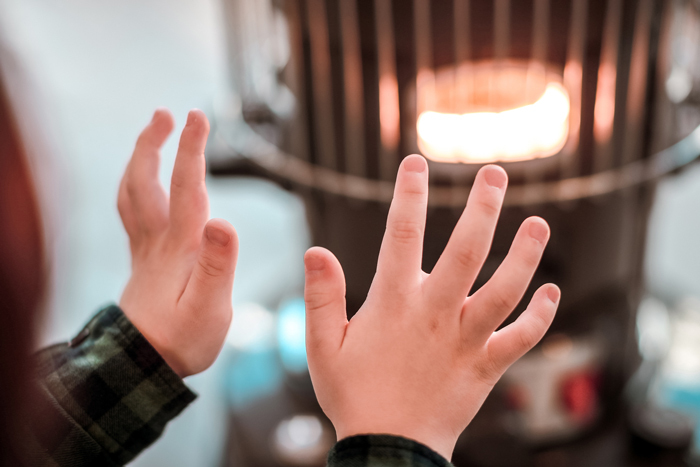
Beware of faulty heaters
If all these precautions are taken, most gas heaters should be safe to use, as long as they haven’t developed a fault.
“Problems with dangerous levels of pollutants usually only arise when faults develop within the heater which means you get more waste products like carbon monoxide and nitrogen dioxide,” explains Barnes.
He says this issue can occur whether your heater is flued or unflued.
“You should have all your gas heaters inspected and maintained by a licensed gas fitter at least every few years to ensure they’re running as intended and you should also have a carbon monoxide detector in case a malfunction occurs,” he advises.
“Note that a gas heater operating safely as per standards will still be emitting a small amount of pollutants, which can have health impacts as we’ve detailed.”
Cooking
Barnes says that while gas heaters have to adhere to strict safety standards governing their levels of emissions, the standards for gas cooktops are not as strict, presumably because they aren’t expected to be run for hours. This means that when you are using a gas cooktop it’s likely to be producing higher levels of air pollutants than is desirable.
“This is why it’s so important to always use a rangehood, every single time you cook with your gas cooktop,” he advises.
Barnes says the best rangehoods are those that vent outdoors, as opposed to the models that use filters to clean and then recirculate the air indoors.
“Vented rangehoods are much more effective at removing toxins like nitrogen dioxide from the air,” he says.
Research confirms that a high-quality vented rangehood can make a significant difference in air quality. In fact, the authors of the 2018 study linking gas stovetops to childhood asthma highlight their finding that the percentage of asthma cases associated with gas stoves could be reduced from 12.3% to 3.4% if all homes with gas stoves used high-efficiency rangehoods that vented outdoors.
Vented rangehoods are much more effective at removing toxins like nitrogen dioxide from the air
Chris Barnes, CHOICE expert
If you’re unable to install a vented rangehood and are concerned about the effects of gas cooking in your home (for example, if you live with young children or people with respiratory issues), Barnes says it may be worth considering an air purifier. One 2013 study found that air purifiers with HEPA and carbon filters can significantly decrease nitrogen dioxide concentration in the kitchen.
Mair also says simple measures like opening doors and windows and using the right flame size can make a difference.
“Creating some cross ventilation can be a great option, especially if you don’t have a vented rangehood,” she says.
“Make sure you’re only using the flame size that is appropriate for the level of heat required and the size of the pan you’re cooking with. A big flame licking the sides of your cookware and making contact with the pan handle won’t deliver the best results and will produce unnecessary air pollution.”
Finally, it’s worth checking if your gas cooktop has a flame failure device. All gas cooktops sold since 1 July 2017 require a flame failure device, which means the gas will automatically cut out or reignite if the flame goes out. This prevents gas from silently and invisibly building up in a room if the flame goes out. If your cooktop is older than this, it may still have a flame failure device, but it’s worth finding out.

